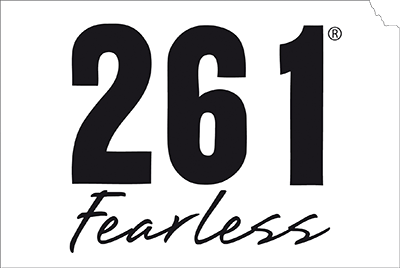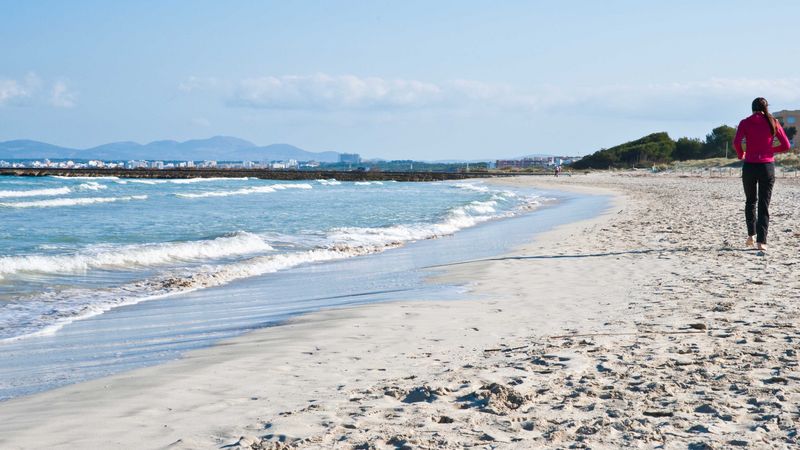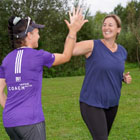Whatever hemisphere you are in, you are in the depths of the season right now. My Chilean friends are enduring icy westerly blasts off the ocean, and even in mostly temperate New Zealand, where I have just been, rain is turning to snow at 400 meters. Unless it is a rare perfect day, they are putting the ocean beaches behind them for the running season.
But in North America, to where I’ve just returned, runners from Miami to New York are cursing the heat and humidity and are flocking to the beach for a cooling get-away, refreshing beauty, therapeutic lung-cleansing salt air and a whopping dose of vitamin D. Most runners think the beach is going to be a great place for summer training, and it can be. But it’s not always that simple. Here are some tips for combining your run with fun in the sun:
- Not all beaches are equal: some are long uninterrupted expanses, but plenty have rocky bays, end abruptly in sea walls, or get cut off by gated communities. If the run on sand is important to you, check out the beach where you are going first.
- Sometimes, the beach you go to appears to be perfectly glorious for running—long, flat, never ending. And this is the very problem; it feels never-ending! Sometimes you run what seems like an hour on the beach, the scenery never really changes, and you look at your watch: 10 minutes!! This is a great beach for people who train on treadmills, or love the Zen of getting lost in the never achievable horizon. (3rd tip here: make sure you absolutely know where you started, because if you are doing an out & back run, the dunes or even buildings all look alike. I’ve occasionally found myself exiting the beach into a totally unknown town having no idea whether I go north or south to get to where I started.) Hence, this is why I rather like the beaches with the rocks and cliffs; you must turn inland for a while, where you often find charming towns, lively campsites, or cool woods and the likelihood of drinking water.
- Unless you are at Daytona, almost all beaches have a marked slant down to the water, which is much worse at high tide. It’s important to alternate direction so that you balance the body or you run the risk of putting the disproportionate pressure on one knee or getting a crick in your back.
- There is usually 3 types of sand on the beach—the dry fluffy stuff up at the top, the medium-wet stuff that is firm but gives slightly, and the wet goopy stuff where the water keeps lapping over. The best place to run is at the waterside edge of the medium wet, it’s hard enough not to drop out beneath you or suck down a shoe, soft enough to be like a good dirt surface. It’s fun to follow the line that a previous wave has just made rendering the sand perfect.
- Beware of your Achilles tendons: no matter how firm the sand, you heels will drop more when you run on sand and stretch your Achilles more than usual. Enthusiastic first-timers will often irritate an Achilles tendon, which are notoriously difficult to treat when injured and often begin with just a slight soreness that gets ignored. Go easy and short on your first few beach runs. If you are prone to Achilles problems, you might consider putting heel lifts in your shoes when you run on sand.
- The beach almost always trashes your shoes, so wear an older pair. For sure you will get wet. In fact, mine get totally soaked, which is half the fun trying to outrun an on-rushing wave and getting sloshed. (By the way, contrary to popular belief, I’ve never found that wet shoes give me blisters.) And for sure you will get sand in them, sometimes quite a bit and all of which you will never get out of your shoes. For some, those persistent little grains are irritating. I actually don’t mind them, because later when the vacation is over and I put on those shoes for an ordinary training run, the sand reminds me of a different place and time. Besides, my socks mostly protect me. When you finish your run, get your shoes off, open the laces wide, pull out the shoe liner and put them all in the sun to dry. When they’re dry, then bang them together to get the sand off of them.
- My advice is to wear very thin socks so the sand can pass through the fibers. I find thick socks very irritating to run in anyway, but really unpleasant and sure to blister when they are filled with sand.
- A word on running barefoot on the beach: Oh, it sounds so natural, so romantic! Until you try it and then, about 800 meters into this run you know why you wear shoes. Talk about instant blisters—sand is extremely abrasive. To say nothing of razor sharp cuts on your feet from broken seashells! And stretching your arches and Achilles beyond normal, a possible set-up for injury. However, walking on the beach, especially in the shallow water, can be extremely therapeutic. The stretch on the sand is mild, especially beneficial is the gripping of the toes and the elongation of the calf muscles. Nutrient-rich seawater has been prescribed for millennia to heal injuries and bone breaks.
- While the ocean breeze can be cooling, sometimes the beach is like a hotplate, and you can dehydrate quicker than usual. The sun’s glare off the sand and the water is extremely burning. You’ll need to scope out where you can get water, or carry your own. You’ll need sunglasses, sunscreen and maybe a hat. Runners share a mutual hatred of sunscreen, as it is sticky and makes you hotter since you can’t sweat as easily. But don’t fight it; you sunburn more at the beach. Or, you can do what I do: go out very early or very late in the day.
- Some beaches are ridiculously crowded, and while it is amusing to run and gawk at the humanity on display, such beaches are not a runner’s ideal except for the fact that it is a lot of fun; generally everyone at the beach is having a good time. Sometimes it’s fun just to do a long lazy jog and finish with a Popsicle that drips all sticky over you and you don’t mind. But in general, there are too many kids dashing in front of you, tripping you up, or you inadvertently annoy people when you go by kicking sand on their towels or in their faces. Go early or late. Both times provide rewards, as you watch the world wake up or the sun go down beautifully.
- Some beaches are remote and very wild. These are spectacular for running, and have given me some of my greatest joys because here, alongside such thunderous power and beauty, I feel exquisitely insignificant, breathtakingly alone and yet exuberantly privileged to be there. But trust me on this: don’t mess with a wild ocean in any case but especially if you are alone, are not familiar with this particular water, and think you’re going to jump in for just a little cooling dip. Don’t take risks in crossing estuaries, venturing out on scenic precipices, or running around a cove at low tide only to find yourself completely cut off on your return, when high tide has rolled in. Make sure someone knows where you are going—anyone can get a sprained ankle!--and be back when you say you will be.
Have fun! When a run is part of a holiday, it doubles the joy!
Love, Kathrine



